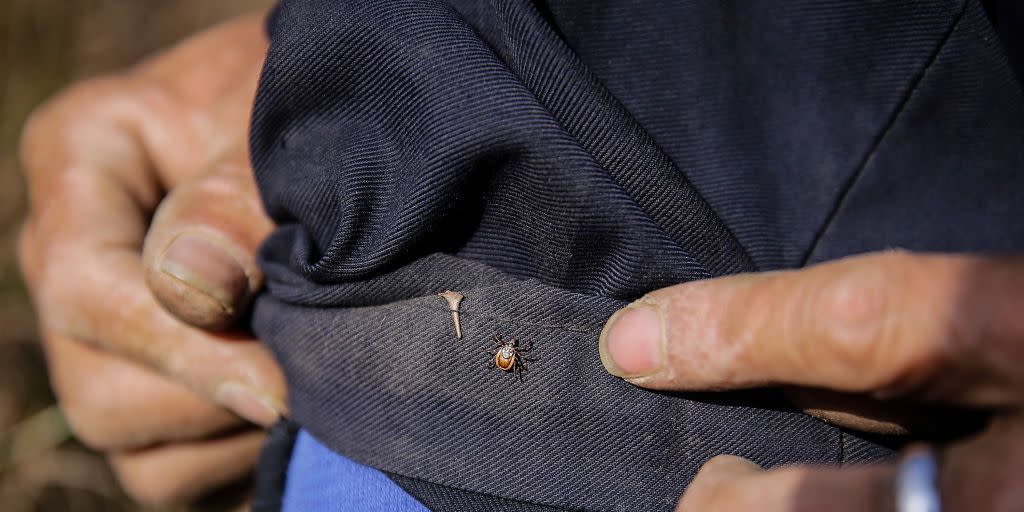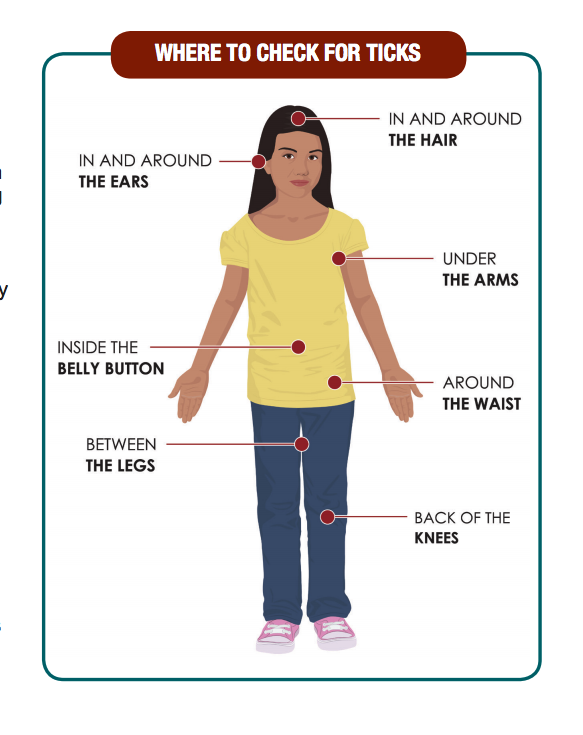How to Safely Remove a Tick—And Make Sure You Don’t Get Bitten Again

Because of all the time you spend outside riding, it’s important to know how to properly remove a tick. If a tick is left in your skin for more than 36 hours, it puts you at risk for Lyme disease. According to the Centers for Disease Control and Prevention (CDC). there are many species of ticks, and they can be found across most of America.
The most important step for avoiding any effects of a tick bite is to do a thorough tick check after spending time outdoors, even your backyard. Don’t be content looking at your arms and ankles, since ticks often attach in hard to reach places like the armpit or groin, including beneath your clothing.
Showering after a ride is often a great time to do this check. For hard to see places, like your back, use a mirror or ask a friend to look for you. If you do find a tick, remove it quickly.
While there are plenty of popular myths about the best way to remove a tick, we prefer that championed by the CDC. The only tool you’ll need is a fine-tipped tweezers, and we recommend this one.
Know Where To Check for Ticks

How To Remove a Tick
Step 1: Grasp the tick as close to the skin as possible with your tweezers.
Step 2: Pull up and out with constant pressure until it pops out. Don’t twist, yank to the side, or jerk on the tick, as this can cause it to leave part of its mandible in your skin. If this happens, pull those parts out with the tweezers as well. If you can’t pull a part out, leave it alone and let yourself heal while watching for symptoms. (You can also try this Tick Key device to remove the entire tick.)

Step 3: Clean the area, and your hands, with soap and water or alcohol.
Step 4: Dispose of the tick by flushing it down the toilet, putting it in alcohol, or wrapping it in a piece of tape.
Things to Avoid
Never squish a tick between your fingers after removal, since tick-borne diseases can still be transmitted this way. Instead, drop the tick into rubbing alcohol before disposing.
Also be sure to not cover a tick with petroleum jelly or nail polish remover, or try to coax it out with heat. These methods rely on waiting for the tick to detach, but it’s best to remove the tick as quickly as possible.
WATCH: An entomologist demonstrates the proper way to remove a tick.
After Removing a Tick
The CDC recommends keeping an eye out for symptoms for 30 days. If you see rash, fever, fatigue, headache, muscle pain, or joint swelling and pain, get checked out by a doctor. They also say not to bother with commercial “tick testing” for germs or disease, as the results are often inconclusive and come back after symptoms would appear anyway.
[Find 52 weeks of tips and motivation, with space to fill in your mileage and favorite routes, with the Bicycling Training Journal.]
Avoiding Ticks in the Future
If you live in a high tick area, or ride in grassy, bushy, or wooded areas, consider treating the clothes you wear outside with 0.5 percent permethrin. This helps to repel ticks, and can also be applied to boots and camping gear. It’ll last a few washes.
The CDC also recommends repellants with DEET, picardin, and oil of lemon eucalyptus among others. They even created this handy tool to help you find the right repellant for your needs. Also consider staying covered with pants, high socks, and long sleeves. Even so, be sure to check under these garments when you get inside and do your tick check.
('You Might Also Like',)

